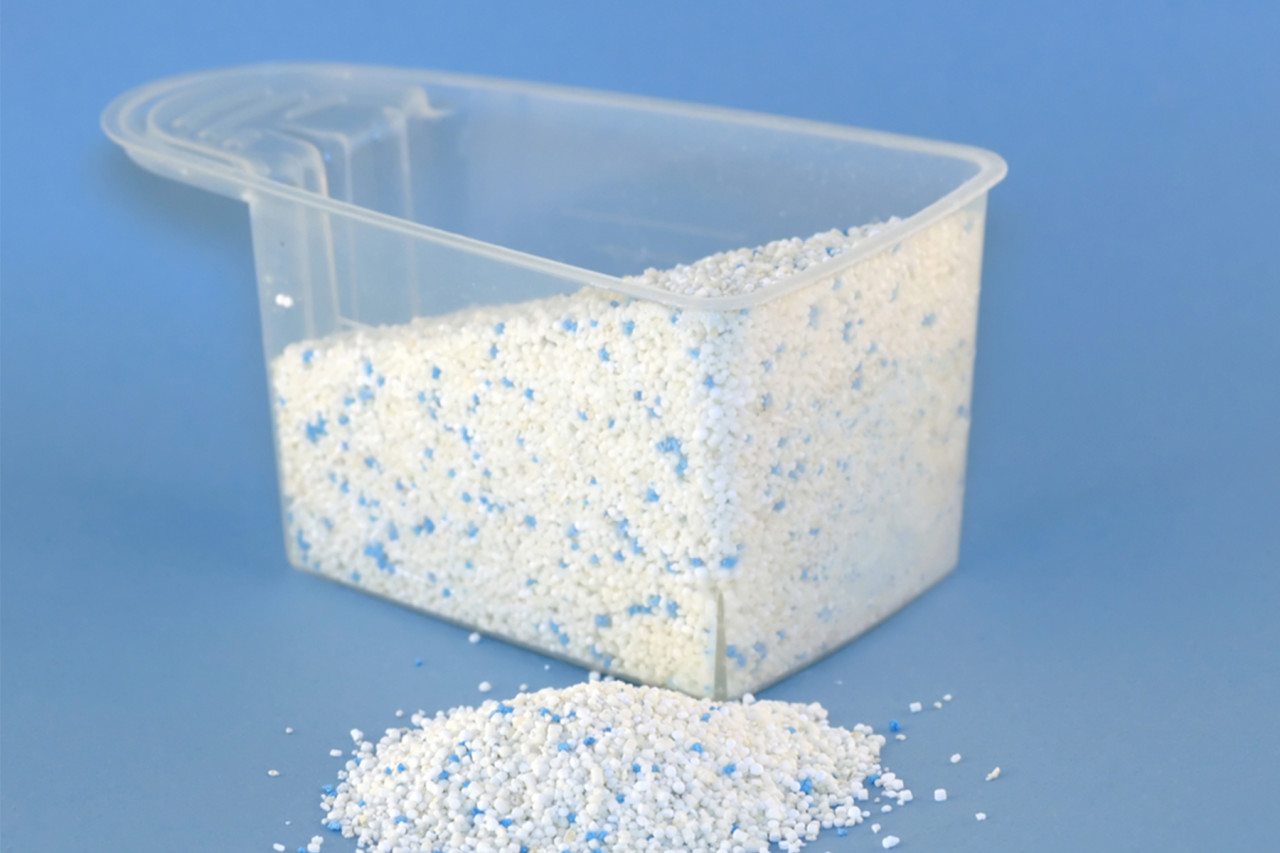How to Dose Sunlight Washing Powder
Doing laundry can feel like a never-ending task, but with Sunlight washing powder, you can make it easier and more efficient. And the best way to do so is to ensure you’re using your auto or handwash powder in the correct dose. This ensures the best economy, and superior cleaning results every time. Sunlight has some top tips to help guide you through the process of dosing Sunlight washing powder correctly for the most effective results.
You want your family's clothes to be clean and stain-free, but using too much detergent can be wasteful and harmful to the environment. On the other hand, using too little can result in clothes that are not properly cleaned. By doing your washing powder correctly, you can save money and protect the environment, while still achieving spotlessly clean laundry.
In this article, we will break down how much washing powder you should use, what factors to consider when dosing, and how to use Sunlight washing powder efficiently. By the end, you will have all the information you need to make your powder detergent work for you.
So, let's dive in and discover how to get the best out of your Sunlight washing powder!
How Much Washing Powder to Use?
The amount of washing powder you should use depends on various factors, including the size of your load, the type of fabric, and the level of dirtiness. It's important to follow the dosing instructions on the packaging, as Sunlight provides specific guidelines for different load sizes.
What Factors to Consider When Dosing Washing Powder
To ensure that you are using Sunlight washing powder efficiently, it's important to consider several factors that can impact the dosing.
How much laundry do you need to wash?
The size of your laundry load is a crucial factor in determining the amount of washing powder to use. For smaller loads, you will need less detergent, while larger loads will require a slightly higher dose. Follow the instructions on the packaging to determine the appropriate amount for your specific load size.
Are you handwashing or machine washing?
Whether you are handwashing or using a washing machine also affects the dosing. If you are handwashing, you will generally need less powder compared to machine washing. Sunlight provides specific instructions for both methods, so be sure to follow them accordingly.
For machine washing, use the Sunlight 2in1 Sensations auto range for best results.
For non-machine purposes, try our award-winning 2in1 Sensations handwash range.
Is it a hot or cold wash?
The water temperature plays a role in dosing washing powder. For hot water washes, you may need a higher dose, as the heat helps activate the detergent's cleaning power. In contrast, a cold wash might require a slightly lower dose. Check the instructions on the packaging for recommendations on dosing based on water temperature.
How many loads are you planning to do?
If you have multiple loads of laundry to do, it's important to adjust the dosing accordingly. For consecutive loads, you may not need to use the full dose for each load. Sunlight guides dosing for consecutive loads, ensuring that you use the appropriate amount without wasting detergent.
The type of fabric being washed
Different fabrics have varying degrees of dirtiness and sensitivity to detergents. Delicate fabrics, such as silk or wool, require a gentler dose of washing powder to avoid damaging the fibres. On the other hand, heavily soiled fabrics, like work clothes or sports gear, may require a higher dose to effectively remove stains and odours. Consider the fabric type when determining the appropriate dosing for your laundry.
How dirty is your laundry?
The level of dirtiness in your laundry is a significant factor in dosing washing powder. For lightly soiled items, you can use a smaller amount of detergent. However, for heavily soiled items, you may need to increase the dose to ensure thorough cleaning. Sunlight washing powder is designed to tackle tough stains, so be sure to adjust the dosing based on the level of dirtiness.
How to Use Sunlight Washing Powder Efficiently?
To use Sunlight washing powder efficiently, follow these steps:
Sort your laundry by colour, fabric type, and level of dirtiness.
Read the dosing instructions on the packaging to determine the appropriate amount for your specific load size and type.
If using a washing machine, add the recommended amount of washing powder to the designated detergent compartment. If handwashing, dissolve the detergent in water according to the instructions provided.
Load your laundry into the washing machine or prepare your basin for handwashing.
Start the washing machine and select the appropriate cycle based on the fabric and level of dirtiness. If handwashing, agitate the water gently to ensure thorough distribution of the detergent.
Allow the washing machine to complete the cycle or handwash the items as needed.
Once the washing process is complete, remove the clean laundry from the machine or basin.
For best results, follow the garment care instructions regarding drying methods and temperatures.
Making your Powder Detergent Work For You
Here are some additional tips to maximise the effectiveness of Sunlight washing powder:
Pre-treat stains: For stubborn stains, it's recommended to pre-treat them before washing. Apply a small amount of Sunlight washing powder directly to the stain, gently rub it in, and let it sit for a few minutes before washing as usual.
Use the right water temperature: Different stains and fabrics require different water temperatures. Follow the garment care labels and adjust the water temperature accordingly. Sunlight washing powder is effective in both hot and cold water.
Soak heavily soiled items: If you have heavily soiled items, consider soaking them in a solution of water and Sunlight washing powder before washing. This helps to loosen dirt and stains, resulting in cleaner laundry.
Avoid overloading the machine: Overloading the washing machine can prevent proper agitation and rinsing, resulting in less effective cleaning. Follow the machine's capacity guidelines and avoid cramming too many items into a single load.
Use the appropriate cycle: Washing machines offer different cycles designed for specific fabric types and levels of dirtiness. Select the appropriate cycle to ensure optimal cleaning performance.
Follow the recommended maintenance: Regularly clean your washing machine to prevent the build-up of detergent residues and maintain its efficiency. Refer to the manufacturer's instructions for proper maintenance guidelines.
Store the detergent properly: Keep your Sunlight washing powder in a cool, dry place away from moisture and direct sunlight. This helps to preserve its quality and effectiveness.
By following these steps and tips, you can ensure that you use Sunlight washing powder efficiently and achieve clean, fresh laundry with every wash. Remember to adjust the dosing based on load size, fabric type, and level of dirtiness, and always refer to the packaging instructions for specific guidelines. Sunlight washing powder, with its powerful cleaning formula, is your reliable partner in maintaining stain-free and fragrant laundry.
Shop our auto and handwash powder, liquid and bar range, here.
Frequently Asked Questions
Do you need a lot of powder detergent to wash clothes?
The amount of powder detergent you need to wash clothes depends on various factors such as load size, level of dirtiness, and water hardness. It's important to follow the dosing instructions on the packaging for the specific brand and type of detergent you are using. Using the right amount ensures effective cleaning while avoiding wastage.
How many cups of washing powder do I need for a heavy load?
The recommended amount of washing powder for a heavy load will vary depending on the specific brand and type of detergent you are using. It's best to refer to the dosing instructions provided on the packaging. As a general guideline, you may need slightly more detergent for a heavy load compared to a regular load. However, it's important not to exceed the recommended dosage to avoid issues such as excessive foaming or detergent residues on clothes.
How can you measure washing powder without a scoop?
If you don't have a scoop, you can use common household items such as a tablespoon or a measuring cup to measure the washing powder. Check the dosing instructions on the packaging to determine the recommended amount in tablespoons or grams. Alternatively, you can estimate the amount by visually dividing the recommended dosage using a spoon or by filling a measuring cup to the appropriate level.
Is it better to use too much or too little washing powder?
It is generally better to use the recommended amount of washing powder for optimal cleaning results. Using too much detergent can lead to excessive foaming, which may affect the performance of your washing machine and leave detergent residues on clothes. On the other hand, using too little detergent may result in clothes not being thoroughly cleaned. It's important to find the right balance by following the manufacturer's dosing instructions.
Can you use too much washing powder?
Yes, using too much washing powder can have negative effects. Excessive detergent can lead to excessive foaming, which can interfere with the washing machine's performance and potentially cause issues such as clogged filters or drainage problems. Moreover, using more detergent than necessary does not necessarily lead to cleaner clothes and may leave detergent residues on fabrics. It's important to follow the dosing instructions on the packaging to ensure the correct amount of detergent is used for each load.


